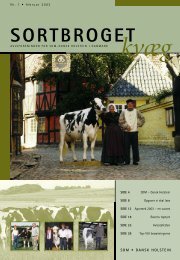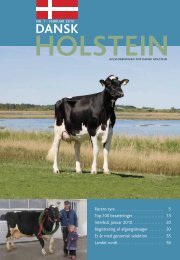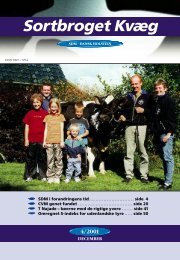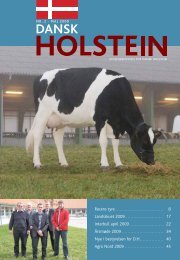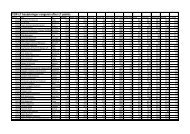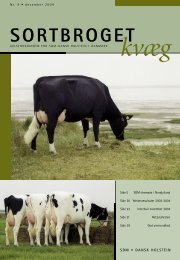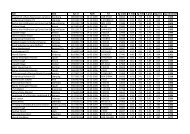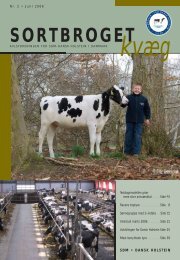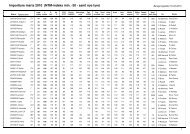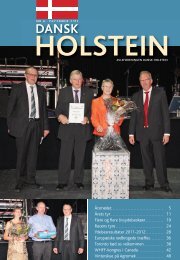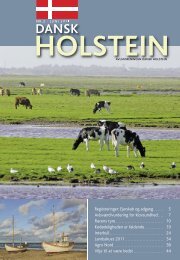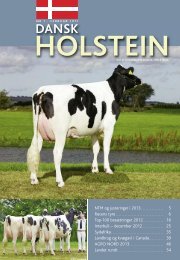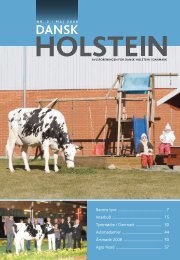2012 WORLD HOLSTEIN CONFERENCE - Dansk Holstein
2012 WORLD HOLSTEIN CONFERENCE - Dansk Holstein
2012 WORLD HOLSTEIN CONFERENCE - Dansk Holstein
You also want an ePaper? Increase the reach of your titles
YUMPU automatically turns print PDFs into web optimized ePapers that Google loves.
SESSION 6: GETTING MORE OUT OF MILKUsing Milk to Test for Health & Reproductive StatusNEIL PETRENY (CANADA)Neil Petreny is the General Manager of CanWest DHI, a dairy farmerowned herd recording agency located in Guelph, Ontario, Canada.CanWest DHI provides services to 4,200 dairy farmers located inthree time-zones across the western half of Canada. Working witha progressive Board of Directors, CanWest DHI has introduced anumber of new products and services to meet the ever-changingdemands of dairy farmers, with a strong focus on recognizing theneeds of the growing segment of larger herds in the Canadiandairy industry. Originally from the province of Saskatchewan, Neilhas been involved in the dairy industry in both Western Canada andOntario. With an undergraduate degree in agriculture and a Mastersin Business, Neil has been actively involved in the dairy performancerecording sector for nearly 30 years. He is also a past Director of ICAR - the International Committee onAnimal Recording. During seven years on the ICAR board, Neil served as President from 2006 to 2010.The traditional use of blood as the primary diagnostic media used in the dairy industry for the most common healthand disease tests is being challenged by the significant advantages of using readily available milk samples. Research andanalytical technology advances are opening the doors to cost effective health, reproduction and disease diagnosticsfrom the more than 40 million individual animal milk samples routinely collected in the Canadian and US dairyindustry each year.The historic challenges of using traditional blood samples – including sample collection, handling, identification andreporting of results - are significantly simplified for animals when using routine milk recording samples. Examples ofcurrent diagnostics available include milk urea, acetone/BHB (ketosis), Johne’s (paratuberculosis), Enzootic bovineleukosis (EBL), Neospora, and Staphylococcus aureus. Within a year the industry is anticipating the introduction andwidespread adoption of a pregnancy confirmation test using milk samples. These diagnostic tools utilize central labtechnologies such as mid-infrared, ELISA and PCR.29In addition, nearly 11 million bulk tank milk samples are collected in US and Canada each year which may providethe opportunity for a cost effective method to monitor the presence of specific zoonotic pathogens. As with alldiagnostics, sample integrity and results interpretation will require close consideration. However, when good datais combined with improved data management capabilities, these new opportunities will not only enhance on-farmmanagement decisions, in the long term they will lead to healthier animals/herds through selection for diseaseresistance, reduced antibiotic usage through animal specific treatment protocols, reduced milk production costs andthe ability for the industry to monitor and potentially respond quicker to disease outbreaks.



